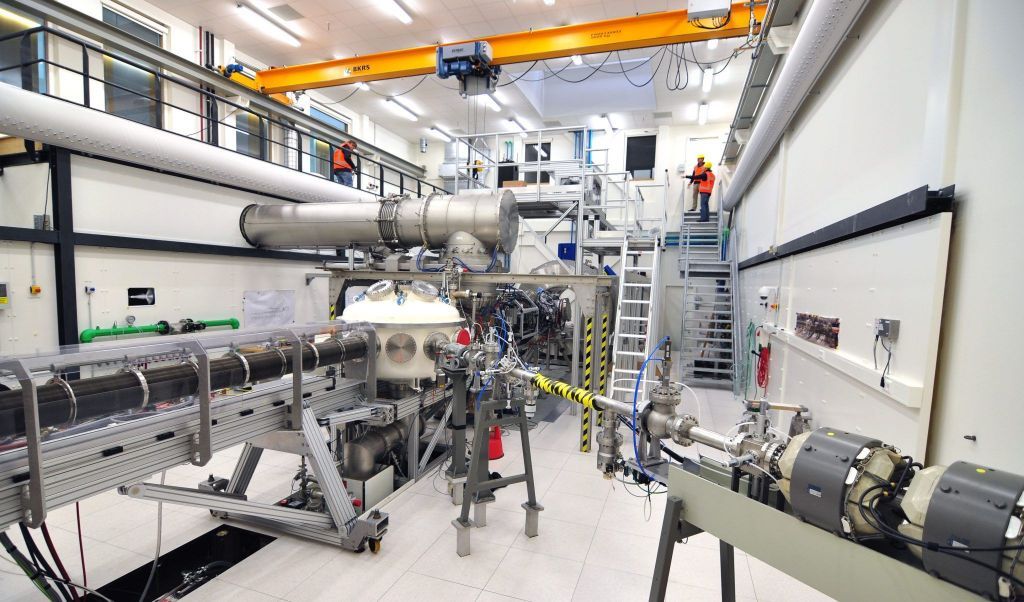
Nuclear fusion is the long-standing wish of a great many energy researchers: to imitate the reactions between merging hydrogen nuclei in the heart of the sun as a safe, clean and practically inexhaustible source of energy. The international fusion reactor ITER, under construction in the south of France, is designed to be the first in the world to generate more power from hydrogen fusion than is needed to heat and control the hot fuel (plasma – a gas of charged particles). ITER will start its first measurement campaign in 2025, but various preparatory tests are already being carried out at DIFFER at the TU/e campus in Eindhoven in anticipation of this.
With success. Last week, the Magnum-PSI research facility at DIFFER (Dutch Institute for Fundamental Energy Research) set a new world record for the longest test of materials under the toughest conditions in future nuclear fusion reactors. In an 18-hour experiment, Magnum-PSI exposed tungsten test items to the equivalent of a year’s high-power experiments in the ITER international fusion reactor. That is 50 times more than the previous record. The result underlines that Magnum-PSI is the only laboratory facility in the world capable of exploring how reactor materials will change during their years of operation at the ITER reactor.
DIFFER’s 15-metre Magnum-PSI laboratory facility is the only one in the world that is already able to test materials under the extreme plasma conditions that will prevail at ITER’s exhaust. The hot, dense plasma in ITER’s exhaust is similar to the conditions in a welding flame, at the heat shield of a spaceship returning to the atmosphere, or at the surface of the sun. Thanks to a new superconducting magnet (in operation since early 2017), Magnum-PSI is now able to maintain those conditions for hours and to investigate the long-term effects of such exposure.
Photo: Magnum-PSI facility DIFFER ((c) DIFFER)

